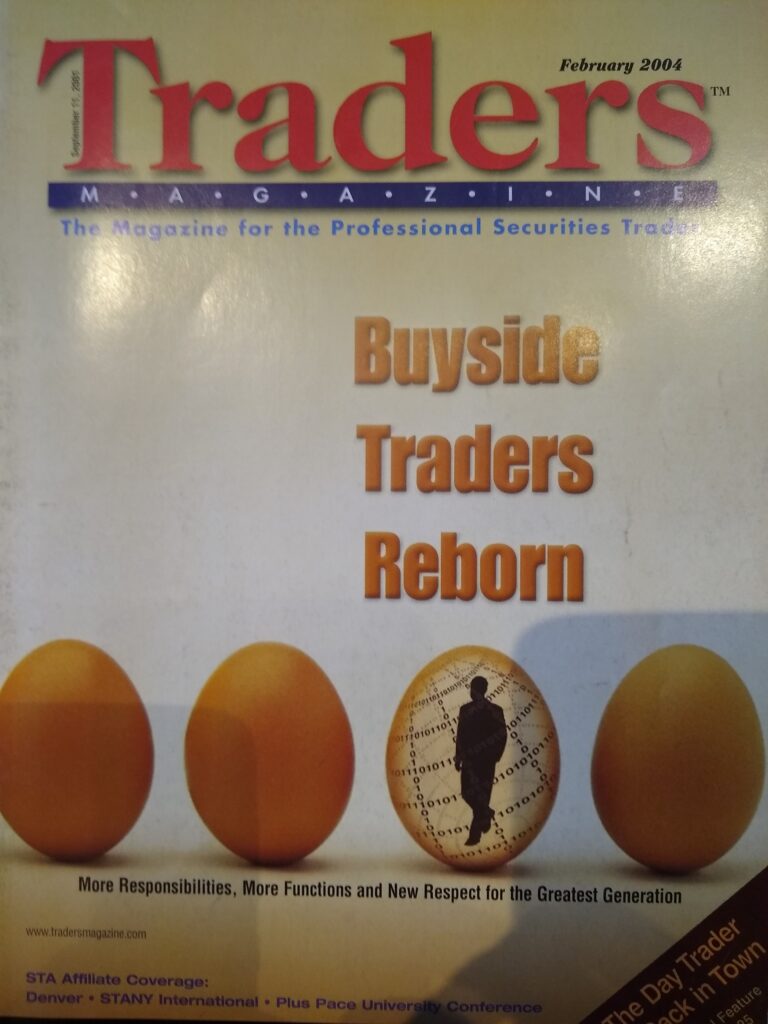FLASH FRIDAY is a weekly content series looking at the past, present and future of capital markets trading and technology. FLASH FRIDAY is sponsored by Instinet, a Nomura company.
Buy-side traders have a serious job – buying and selling securities in complex and fast-moving electronic markets, in the most efficient, frictionless way possible.
What’s at stake? Protecting the returns, and retirements, of end-user investors, typically mom-and-pop Main Street types such as cops, teachers, nurses and small business owners.
It is common knowledge today that traders at institutional firms such as BlackRock, Fidelity and T. Rowe Price are at least as qualified, talented, and vital to the investment process as their analyst and portfolio manager colleagues. But that wasn’t always the case.
To wit, the February 2004 Traders Magazine cover story, Buyside Traders Reborn, chronicled how buy-side traders had only recently attained stature.

“Buyside traders, often regarded in the past as second stringers by portfolio managers, are finally overcoming their inferiority complexes. Regulatory, economic and technological changes that have transformed the equities trading marketplace over the last decade have spilled over into the workplace. They have redefined the relationship between traders and portfolio managers.”
The article continued:
“In the triangle of portfolio manager, analyst and trader, the trader was not always considered a professional equal,” said Joan Stack, trading manager at the Ohio Public Employees Retirement System (OPERS), a pension fund with $59 billion under management. “But as the markets have become more demanding and the technology more sophisticated, the trader has been forced to achieve the same level of sophisticated professionalism as managers and analysts,” Stack added.
In the past, traders often arrived from the operations side of the business – from securities settlement, stock loan services or other areas that touched peripherally on the trading process. Now they increasingly come out of MBA programs or are encouraged to work towards a CFA designation.”
It is mildly amusing to ponder an operations person being dropped onto a trading desk of today, tasked with executing trades that entail a deep knowledge of market structure, data and quantitative skills, algorithm selection, liquidity comparisons across trading venues, and the implementation of transaction cost analysis. A tall task to say the least.
This evolution and leveling up of the buy-side trader was well underway 20 years ago, when markets were already largely electronic, and the stereotypical ex-lacrosse player sell-side trader who relied on relationships and ‘wining and dining’ clients to win buy-side business was becoming a dinosaur.
From the 2004 article:
“For traders, the key to the changing role is technology. At most institutional money management firms, just about the entire trading process – from order generation and management to trade execution and transaction-cost analysis systems – has gone electronic … The trader’s decision about how to handle each order is critical to the price and the speed of execution. “If a trader consistently executes in one particular marketplace because they’re unknowledgeable, that’s going to show up in the transaction cost analysis because they’re missing liquidity,” said Paula Peter, manager of equity trading at Pittsburgh-based Mellon Private Wealth Management, which has $35 billion.
“It’s crucial that buyside traders stay up on technology and understand and use various trading strategies,” added Peter.”
Sounds a bit like today.






